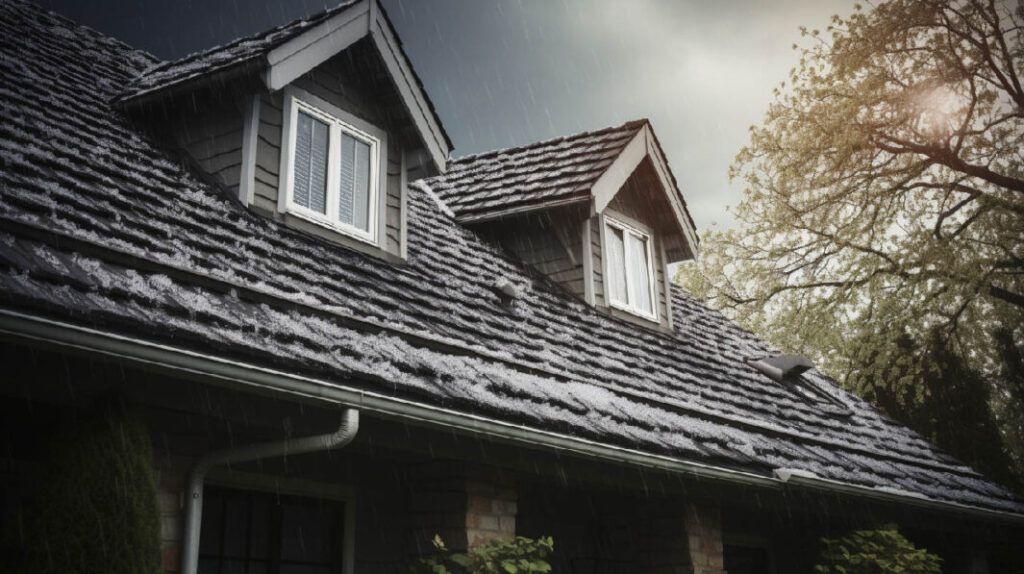Hail storms can cause extensive property damage in just a few minutes, leaving homeowners and businesses scrambling to repair and restore. This guide covers everything you need to know about hail storm restoration, from assessing damage to choosing the right restoration services.
What is Hail Storm Restoration?
Hail storm restoration refers to the process of repairing and restoring properties affected by hail. This includes repairing roofs, windows, siding, and vehicles that have sustained damage due to the impact of hailstones. With the right approach, proper restoration can return your property to its original state and even strengthen it against future storms.
Why is Hail Storm Restoration Necessary?
Failing to address hail damage promptly can lead to further complications, such as water leaks, mold growth, and compromised structural integrity. Timely restoration not only preserves the appearance of your property but also ensures long-term safety and value. Immediate action helps prevent minor damage from turning into a costly, extensive repair job later.
Common Types of Hail Damage to Property
Roof Damage from Hail
Roof damage is one of the most common and costly impacts of a hail storm. Hailstones can dent, crack, or even puncture shingles, leading to leaks and structural vulnerabilities. Damaged shingles need to be replaced as soon as possible to avoid moisture infiltration.
Vehicle Damage from Hail
Vehicles left exposed to hail can sustain significant dents, broken windows, and chipped paint. While some minor dents can be corrected with paintless dent repair, severe damage may require more extensive bodywork and window replacement.
Window and Siding Damage
Windows can crack or shatter during a hail storm, and siding can dent or split. Broken windows compromise the security of your property, while damaged siding can let moisture into the walls, leading to mold and rot over time.
Steps to Take After a Hail Storm
Safety Precautions
Before assessing the damage, ensure your surroundings are safe. Avoid stepping on loose shingles or damaged parts of your property that may collapse.
Documenting the Damage
Take clear photos and videos of the damage, as these records will be crucial for insurance claims. Capture details of damaged shingles, windows, and any other impacted areas.
Contacting Insurance for Claims
Reach out to your insurance provider to file a claim. An insurance adjuster will assess the damage and guide you through the next steps. Having comprehensive documentation will facilitate a smoother claims process.
Detailed Hail Damage Inspection
A thorough inspection by a qualified professional is crucial to identify hidden damage that may not be visible to the untrained eye. Experts will assess areas like the roof, attic, siding, and even interior walls for signs of water leaks or structural issues.
The Role of Professional Hail Damage Restoration
Benefits of Hiring a Professional
Professionals bring expertise, advanced tools, and a keen eye for detail. They ensure that every aspect of the damage is addressed, from cosmetic repairs to structural reinforcement, minimizing the likelihood of recurring issues.
What to Expect During the Restoration Process
The restoration process may include cleaning up debris, repairing or replacing damaged components, and reinforcing weak spots to prevent future damage. Professionals work efficiently to minimize disruption and restore your property as quickly as possible.
DIY vs. Professional Hail Restoration
While minor dents and superficial damage can sometimes be handled DIY-style, extensive hail damage requires the skill and equipment of a professional. Attempting to restore serious hail damage on your own can risk further damage and may not satisfy insurance requirements.
Tips for Choosing a Reliable Hail Damage Repair Service
When selecting a hail damage repair company, consider factors such as experience, certifications, customer reviews, and warranties. Ask about their expertise in hail restoration specifically and confirm that they’re licensed and insured.
Cost of Hail Storm Restoration and Insurance Coverage
The cost of restoration varies depending on the severity of the damage, with roof repairs often being the most expensive. Fortunately, many homeowner insurance policies cover hail damage. It’s essential to review your policy and discuss coverage with your insurance provider to understand out-of-pocket expenses.
How to Prevent Future Hail Damage
Roof Maintenance and Reinforcement
Regular roof maintenance and inspections help identify weak spots that could be vulnerable to hail. Consider using hail-resistant roofing materials like impact-resistant shingles for added protection.
Protecting Windows and Vehicles
Installing storm-resistant windows or applying protective window film can reduce the chance of breakage. For vehicles, investing in a sturdy car cover or keeping your car in a garage can prevent hail damage.
Conclusion
Hail storm restoration is vital to preserving your property’s value and safety. From conducting inspections to hiring professional services, each step ensures your property recovers fully and is safeguarded against future storms. Remember, timely action, proper documentation, and choosing a trusted restoration service are key to efficient and effective restoration.


